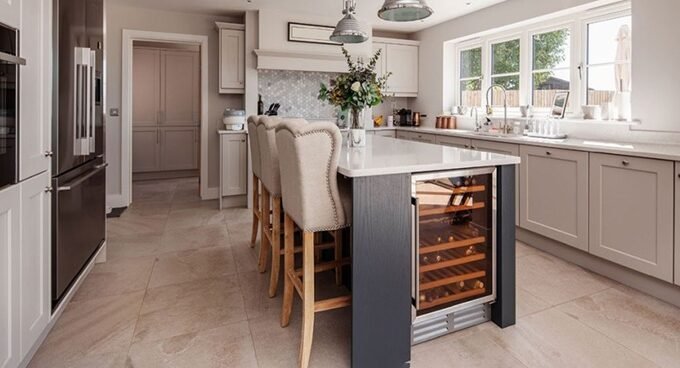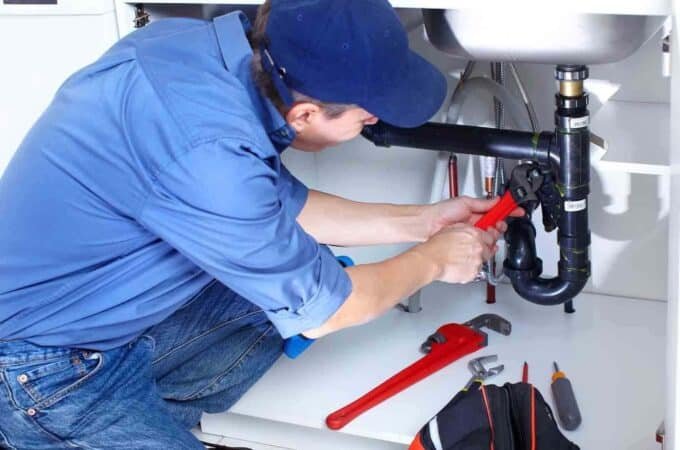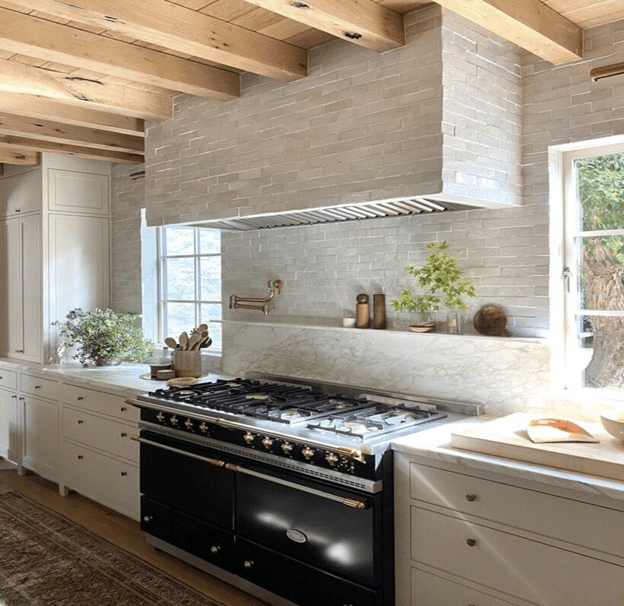
How to Choose a Kitchen Hood You’ll Love
A range hood is an essential component of any kitchen intended for extensive cooking. Apart from removing food odors and preventing lingering smells, it can serve as a focal point, enhancing the style and aesthetics of your kitchen. Here’s what to consider regarding kitchen hood options before making a selection.
Table of Contents
TogglePicking a Range Hood that fits your space
When selecting a range hood that blends functionality with style, there are several factors to consider.
Firstly, examine the proportions. A common challenge in design is ensuring the range hood sits at the optimal distance of 30-36 inches above the range. Depending on your ceiling height and range width, this requirement can result in a sizable hood. While a striking statement piece is desirable, you don’t want it to overwhelm your kitchen space.
One effective strategy to mitigate this issue is opting for a wall vent instead of a ceiling vent. This approach allows for a design that tapers at the top or front, rather than a bulky rectangular structure, creating a lighter aesthetic.
Range Hood Ideas for Every Kitchen
Consider the style you aim to achieve beyond size considerations. Here are a few favored options:
- Metal Range Hoods: Offering a timeless, vintage ambiance with potential industrial undertones, metal range hoods exude classic appeal that endures.
- Wood-Paneled Range Hoods: Infusing a touch of transition, wood-paneled range hoods maintain their status as a timeless choice, blending seamlessly into various kitchen aesthetics.
- Drywalled Range Hoods: Emitting a modern and sleek vibe, particularly when paired with stone or tile accents, drywalled range hoods exude cleanliness. Yet, when integrated into an alcove, they can evoke a historic charm.
Remember, each style can be tailored to appear more modern or traditional, depending on the execution of details. Explore our favorite inspiration boards featuring range hood ideas for further inspiration.
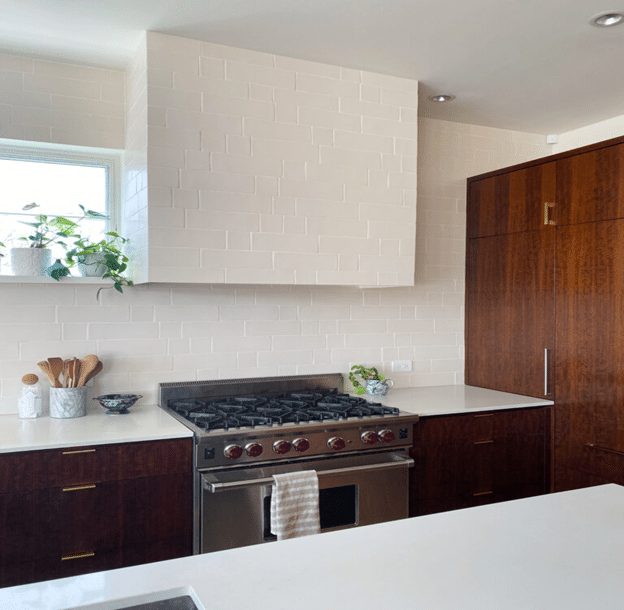
Functional Considerations for a Range Hood
The practical function of a range hood is crucial in eliminating food odors from your home. Modern hood designs increasingly feature a setup where the hood blower, responsible for suctioning air and grease, is integrated into a drywalled box, with the hood element installed on top.
Hood blowers are rated by the cubic feet per minute (CFM) of air they can move or exchange. A higher CFM indicates greater power. For regular and extensive cooking, especially with multiple burners in use simultaneously, opting for a higher CFM is advisable. This ensures efficient venting of fumes outside the home, preventing air pollution in the kitchen. The precise CFM required depends on your kitchen size, but typically falls within the range of 600-1,200 CFM.
It’s essential to familiarize yourself with appliance specifications specific to your area. Different regions may have varying requirements to ensure compliance with safety standards and building codes for your project.
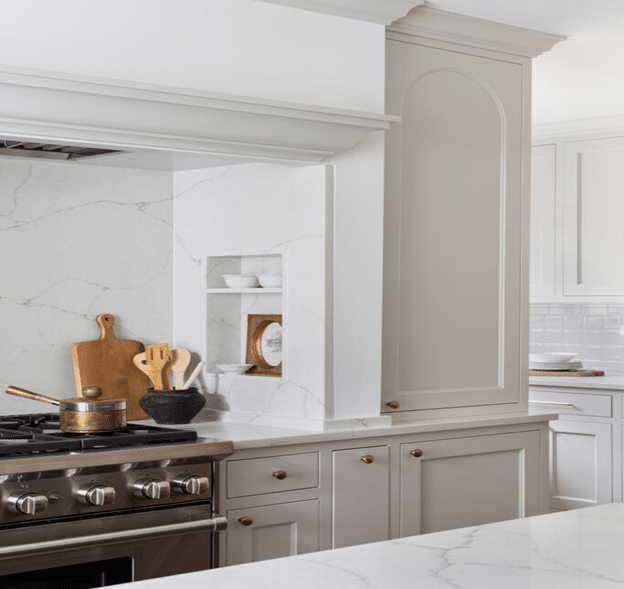
What to Know about Different Range Hood Styles
Metal Range Hood
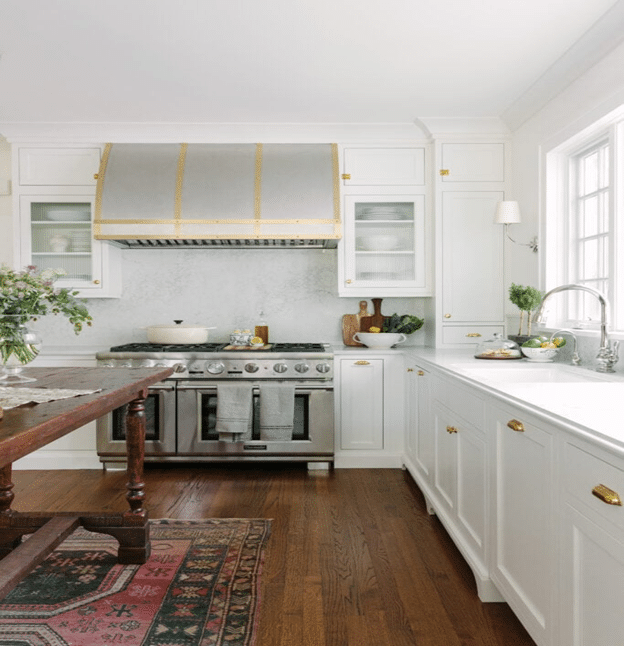
Typically crafted from stainless steel, metal range hoods offer versatility in finishes such as polished or satin brass, polished nickel, or matte black for details like rivets or grommets. These finishes can evoke either a vintage or industrial feel. Since the hood’s finish contrasts with surrounding wood cabinets, it becomes a focal point in the kitchen. Ensure the scale of the hood doesn’t overwhelm the space. While matching the hood to the range simplifies selection, custom options are available through interior designers.
Wood Range Hood
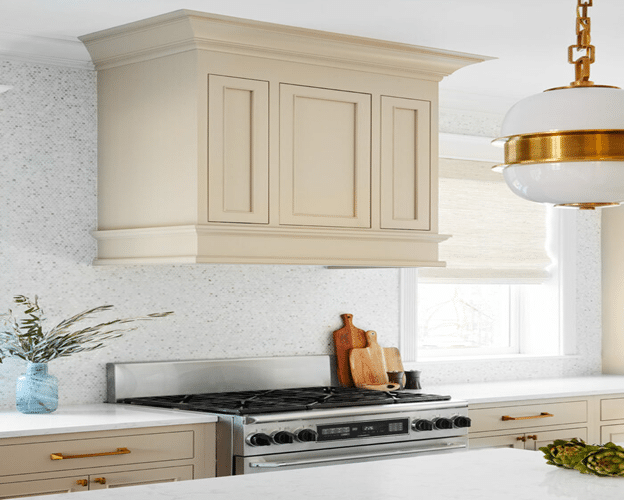
Custom kitchens often feature wood range hoods integrated with the cabinetry to ensure consistency in finishes and profiles. Alternatively, pre-built wood hoods, also known as paneled hoods, can be purchased online in finished or unfinished forms. Verify compatibility with your hood blower insert before purchase.
Drywall Range Hood
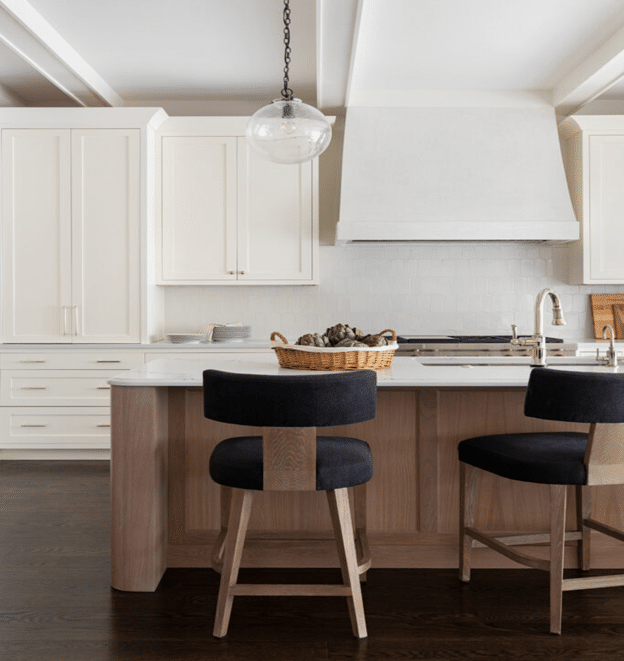
Constructed from the same drywall material as the walls, these hoods incorporate an internal hood blower. They are often treated with special finishes or plasters for emphasis. Common in California-style homes, they may feature a rustic “beam” across the bottom. Collaboration with your builder is essential for integrating a drywall hood during construction, after which the appliance vendor can install th
e blower.
Conclusion
Selecting the right range hood for your kitchen involves careful consideration of both form and function. From metal to wood to drywall options, each type offers distinct characteristics and design possibilities to enhance the aesthetic appeal and efficiency of your cooking space. Whether prioritizing style, ventilation power, or seamless integration with cabinetry, understanding the unique features and requirements of each range hood type ensures a harmonious and functional kitchen environment tailored to your preferences and needs.

